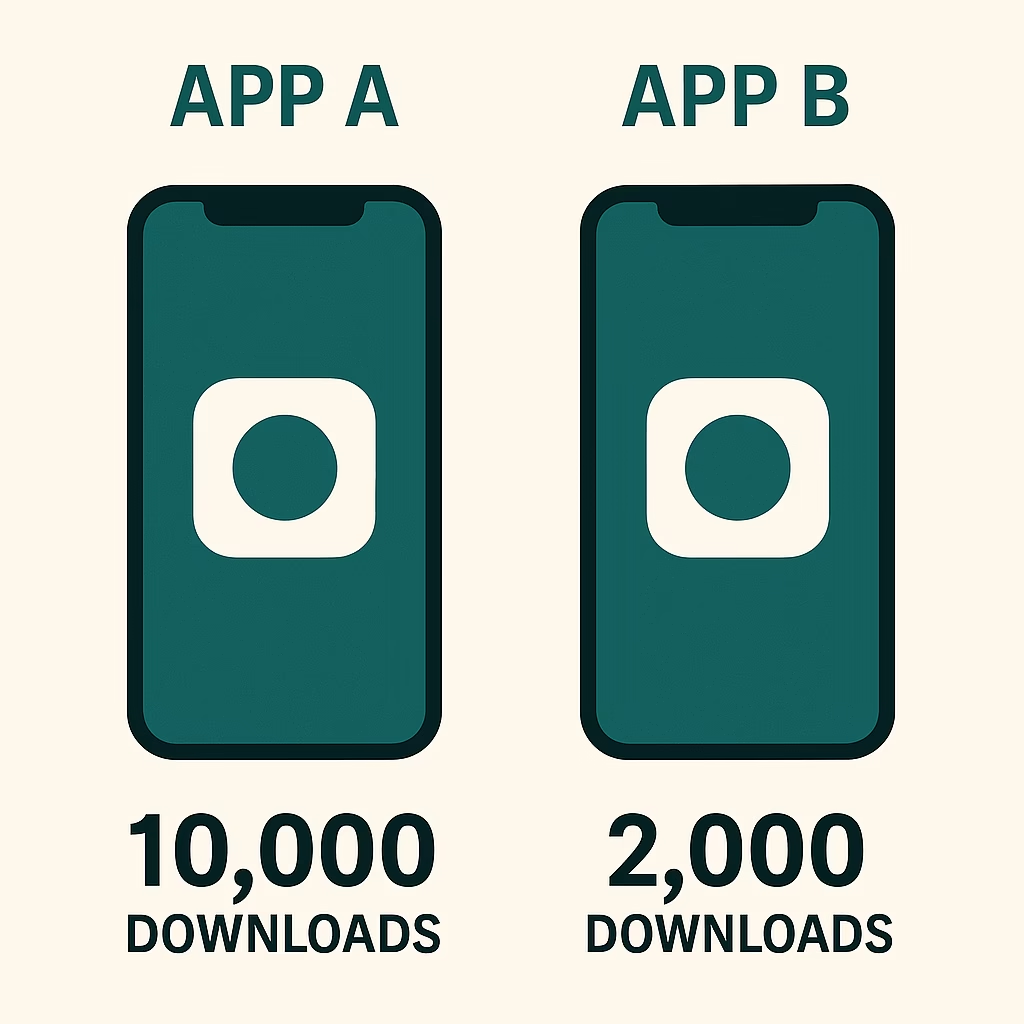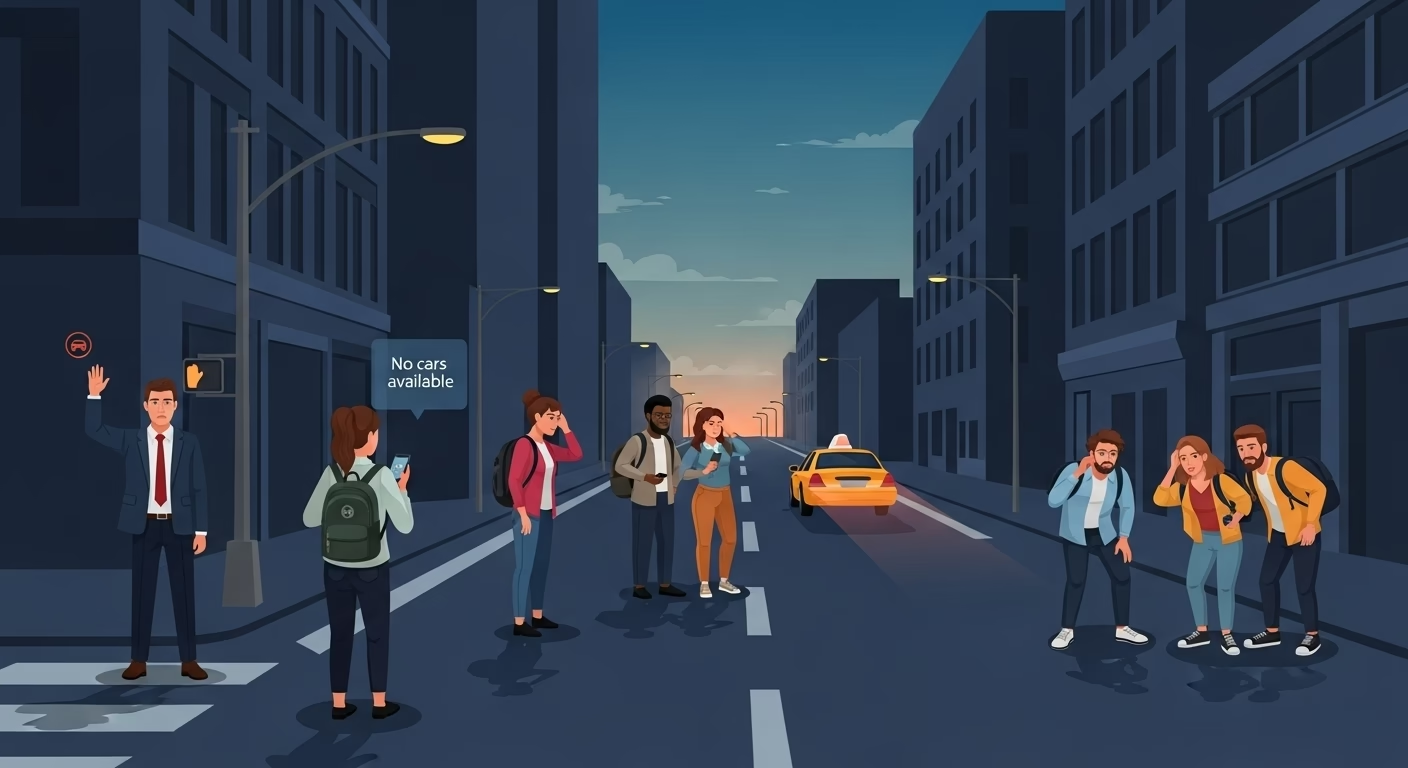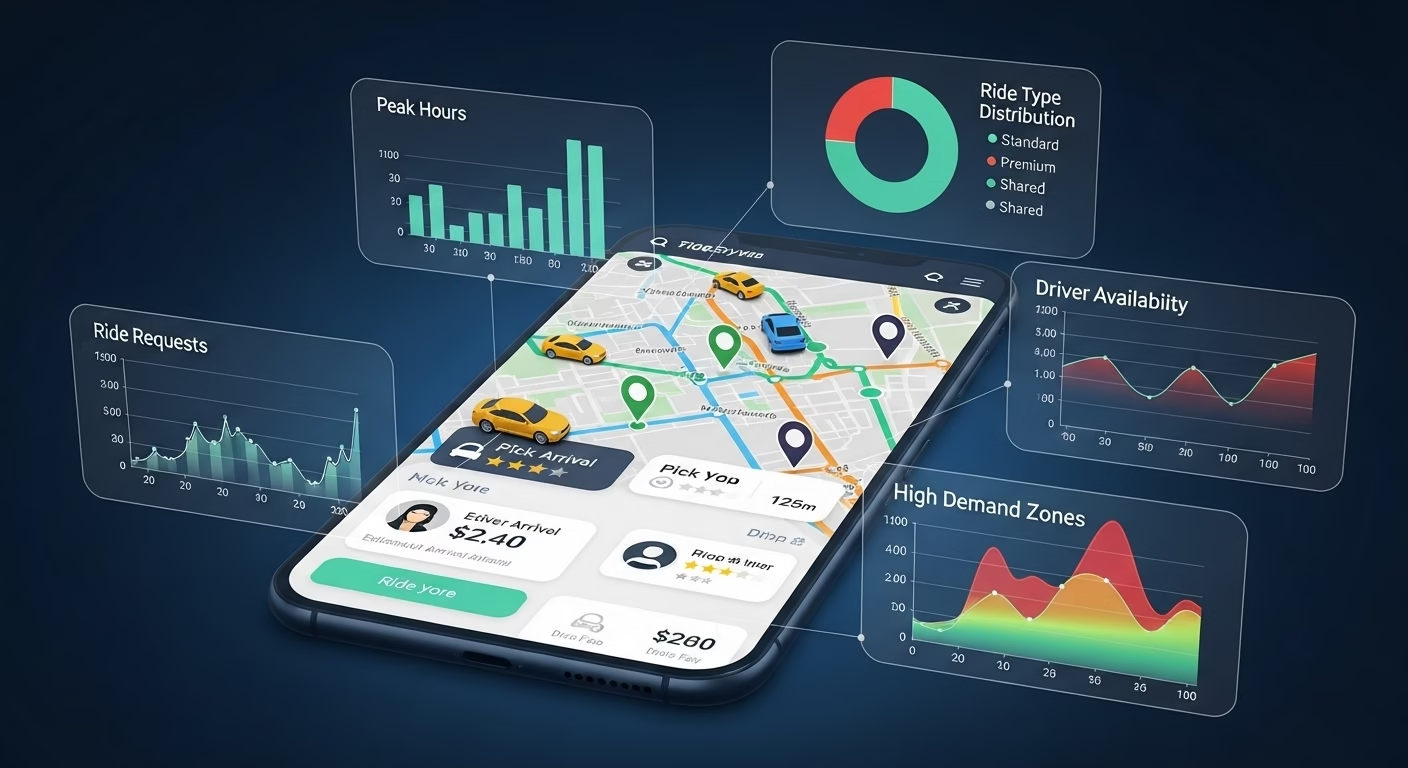The difference between an app that flickers for a moment and one that becomes part of daily life isn’t magic — it’s a design of delight, habit, measurement, and human connection.
When we at Solutioncrafts speak to founders, product leads, or design teams, one recurring tension surfaces: “What’s truly evergreen in app success — what works across time, category, and trend shifts?” Because we see so many “shiny new growth hacks” come and go, but only a few apps endure, one guiding question underlies all our work:
How do you build an app people don’t just download — but remember, return to, and even miss when it’s not around?
In this article, I’ll walk through a timeless formula, told as a story — one that you can overlay on any project. I’ll show you the logic, the risks, and illustrative examples. (Yes — some are well-known, some less so.) And by the end, you’ll have a clear roadmap to apply to your next mobile product.
Narrative Structure & Article Map
Here’s how we’ll unfold the story:
Let's begin!
The Premise: Why Most Apps Fade
Imagine two apps launched on the same weekend:
App A sees 10,000 downloads in week one;
App B gets only 2,000.

A year later:
- App A is ghostly silent — daily active users (DAU) are fewer than 500.
- App B is humming with 200 daily users who love it — and generates reliable revenue.
Why? Because downloads don’t equal survival. Many apps fade not for lack of initial interest, but for lack of retention. They never anchor in a user’s life.
In large-scale studies, researchers have repeatedly found that a high percentage of users abandon an app within the first week — often as many as 70% or more. (arXiv) In fact, one major insight is that downloads are cheap, but attention and habit are expensive.
Another dimension: apps compete not just with adjacent apps but with time, attention, and cognitive load. The moment a user is distracted, tired, or in a different headspace, the app has to pull them back. Many don’t.
In 2025, this has only become more true. Acquisition costs rise. Privacy and targeting constraints deepen. The bar for UX and delight is higher than ever. As one analysis recently put it:
“Retention is not just a side metric — it’s a core driver of app growth. With acquisition costs soaring and privacy changes making targeting harder, apps must prioritize keeping the users they already have.” (Yodel Mobile)
So let’s build our story around not just launching — but staying power.
The Pain That Drives People In
Every great app begins with pain — something users feel acutely.
“I have no time to cook every evening… I hate managing receipts… I’m terrified of forgetting to pay rent…”
If your app idea sits in the “nice to have” zone, it will struggle. The difference between a feature people might try once and a habit-forming product lies in how desperate the pain is.
A. Find the pain that lacks a behaviorally baked solution
In early-stage talks with founders, we often ask: Would a user pay for this tomorrow? Would they rant about it to a friend? Would they try a workaround? If the answers lean “yes,” you may have the right pain point.
As an example: note-taking tools are plenty. But Evernote succeeded in the early days because it solved the cross-device syncing and “capture before you forget” pain so cleanly that people adjusted their routines. The pain was urgent: I’ll lose the idea if I don’t write it down now.
Another: Duolingo didn’t invent language learning — but it reoriented it around microdaily practice with streaks and gamified progress. That taps a pain seen by many: “I want to make progress in language but never stick with it.” Its very structure invites users to come back daily. (Wikipedia)

B. Validate before you build — with empathy and small bets
At Solutioncrafts, when we see a new idea, we rarely build full products first. Instead, we:
- Interview deeply — unearth emotional context, dominance, workarounds users already use.
- Prototype the tiniest thing — even a mock-service or email workflow — and expose it to early adopters.
- Observe dropoffs, friction, language users use to describe their pain.
The narrative moment here: too many teams start with feature checklists; we start with stories of frustration, and then map minimal features to relieve just enough of that distress.
C. Case in point: A micro-pain turned anchor
Consider the problem of expense tracking for freelance workers. It’s not sexy. But it is painful: lost receipts, misfiled documents, missing deductions. A small startup built an app (call it “TrackMySpend”) whose sole job in MVP was: take a photo of a receipt, auto-categorize it, and remind users weekly to file for taxes. That alone, done beautifully, turned into a baseline tool for many freelancers — because the pain is recurring and emotional (end-of-year stress).
The moral: don’t build a Swiss Army knife; relieve one cutting pain.
The Core Moment of Delight (Your MVP of Joy)
Once pain draws users in, your job is to deliver a core moment of delight — not after many steps, but quickly. This is your “eureka moment” or “aha moment.” After that, the user is more forgiving of rough edges.
A. Define the one core outcome
Ask: What is the single outcome that makes a user feel “Yes — this app is for me”. Then optimize everything — onboarding, UI, speed — to get them there fast.
When Slack launched, they focused on letting users send messages + create channels right away, not on file integration or threads. Why? Because the core outcome is “my team can talk here.” When users saw that work, they stayed. All the extras came later.
For Duolingo, the moment is when you complete your first lesson, earn XP, and see progress toward your next streak. That micro win kicks off the loop. (Wikipedia)
B. Emotional design: sprinkle delight
Delight is not fluff. It’s the fleeting delight — a little animation, a congratulatory badge, micro interactions — that say, “you’re on the right path.” These help cross the valley of boredom or friction.
For example, when users hit a daily goal, instead of a plain “You did it” message, give them a confetti burst, or a witty label (“Grammar champ!”), or animate a path. These tiny touches build affection.
C. Example twist: Waze’s living map
Waze entered the navigation space dominated by Apple Maps and Google Maps. What made it core was not just routing — but the real-time obstacles, crowd-sourced hazard alerts, and playful voice directions. That layer of delight and utility made it feel alive, and that changed the way many drivers interacted.
It’s not always in high polish; sometimes it’s in the clever twist.
D. The trap: overbuilding before delight
A common anti-pattern is building too many features before the core becomes meaningful. When the product smells of half-baked tech, early users bail. Instead: strip to the core, deliver delight fast, then layer.
Habit Architecture (Repeat Use as Design)

An app that’s never used again fails. So we deliberately design for repeat use — anchoring the app in user routines and contexts.
A. The Hook Model, reimagined
One widely referenced structure is the Hook Model (Trigger → Action → Reward → Investment). Let’s reframe it for what we teach in Solutioncrafts:
- Trigger: internal (emotion, context) or external (notification, prompt)
- Action: the minimal step (tap, swipe, input)
- Reward: variable, surprising, or progress
- Investment: a small input from the user (data, content, preference) that deepens dependency
Use it as scaffolding, but don’t let it feel mechanical to users.
B. Trigger wisely and sparingly
Push notifications, reminders, prompts — done wrong — feel like nagging. Done right — contextual, timely, personalized — they feel helpful.
For example, a fitness app might only ping when a user hadn’t logged an activity by their usual time window, gently nudging them back in. A news app may surface curated stories when it senses a lull in reading behavior.
In recent analysis, apps that sent generic, untargeted push messages often lost users — they were simply ignored or switched off. (Wezom)
C. Reward with variability + progress
Humans crave both predictability (knowing what you’ll get) and surprise (a bit of unknown). Use a mix:
- Fixed rewards: progress bars, badges, streaks
- Variable rewards: randomized surprises, curated picks, small bonuses
The more an app can balance predictability + novelty, the more it keeps users curious.
D. Investment: Make them lean in
Every time a user adds a little — their profile, preferences, content, connections — they build inertia. They’ve invested in the app. They are less likely to quit.
Think: bookmarking, personalization, uploading content, building habits. A language app may let users set topics, add words they like, or engage with friends. A cooking app might let you build your own favorite recipes list. These all add stickiness.
E. The multiple lives insight (re-engagement after lapse)
Apps don’t always fade linearly. A study on mobile activity apps found an interesting pattern: many users “return” after a period of absence, and when they return, they behave as if it’s a fresh start. (arXiv) That suggests two things:
- Design for graceful re-onboarding — don’t punish users who return after a break.
- Use “streak reset forgiveness,” reactivation nudges, or contextual content to pull them back in.
Habit architecture doesn’t end at day 30 — it must plan for lapses and returns.
Measurement, Learning and Adaptation
If you don’t measure, you don’t learn. But the choice of metrics—and how you interpret them—determines whether your learning is shallow or deep.

A. Focus on the “Retention Backbone” metrics
Vanity metrics (e.g. total installs) are misleading. The real backbone metrics include:
- Day 1, Day 7, Day 30 Retention (or equivalent)
- Activation funnel metrics (how many users hit that core moment)
- Cohort retention (how different groups behave over time)
- Lifetime value (LTV) vs cost to acquire (CAC)
- Churn signals & dropoff points
Many apps see ~26% retention on Day 1, but only 3–4% retention by Day 30. (Sendbird)
B. Use cohorts to see truth in difference
Aggregate metrics mask stories. By segmenting cohorts — by acquisition source, geography, persona — you see meaningful patterns.
For example, users acquired via influencer marketing may have higher retention, or users from one language region may bounce more. Cohort analysis reveals where to double down or fix.
C. A/B test methodically, but guard the user experience
When you experiment, always have a control group, holdout users, and guardrails (don’t degrade a metric significantly while chasing a small gain). Use feature flags and deterministic bucketing to roll out changes safely.
A tip: never stop on the “first win” of an A/B test; measure stability across weeks, device types, cohorts.
D. Feedback loops and qualitative signals
Data doesn’t tell you why. Use surveys, session replays, qualitative interviews, and support logs. Look for friction points, confusion zones, and unmet expectations. Combine the quantitative + qualitative to refine.
E. Iterative cadence: ship, measure, adjust — weekly
Among the most timeless practices: have a rhythm. Short cycles (weekly or biweekly) of hypothesis → experiment → analysis → change ensure momentum. The apps that survive are those that never “stay still.”
Distribution That Scales Itself
Great retention is vital — but without distribution, your app may never reach critical mass. The ideal is built-in virality and sharing, not just external marketing.
A. Leverage natural shareable moments
Design features that invite sharing organically:
- Shareable content (badges, results, progress)
- Collaborative features (invite a friend, co-use, mutual goals)
- UGC (user-generated content) as exportable material
For example: a fitness app can let you share a weekend accomplishment; a learning app can let you post “I just mastered this lesson.” These create viral touchpoints.
B. Referral loops with incentives
Offer small rewards (credit, additional content, extended trial) when users bring others. But the referral mechanism should feel like a bonus, not a push. A mis-implemented referral feels spammy.
C. Community as distribution
Some apps build community features (forums, social feed, group challenges) such that existing users bring others. The community becomes part of the value. If your app enables people to connect or compete, that connective tissue is a growth lever.
D. Reinforce retention as distribution
Retention feeds distribution. When users stay longer, they invite others, leave reviews, talk about the app — all boosting acquisition. In marketplaces and app stores, stronger metrics (DAU/MAU, retention, engagement) indirectly improve rankings and visibility.
E. Case examples: gamification and viral loops in real apps
Waze, mentioned earlier, grows via community contributions (reporting hazards, sharing routes), which strengthens both retention and acquisition simultaneously.
Brand, Voice, and The Human Touch
Technology is never enough — people bond with stories, emotions, and identity. Even B2B apps win when they feel human.
A. Be consistent: tone, visual, language
From onboarding screens to email reminders to push notifications — the brand voice should feel consistent, warm, and recognizable. If your push tone is dry but onboarding is playful, users sense dissonance.
B. Make users feel seen
Segmented messaging (not generic), contextualization (“Welcome back, Sarah — you were last working on Recipe X”), and personal touches (celebrations, milestone messages) show users that behind the code is caring.
C. Build a narrative of progress
Frame the user’s journey: “You’ve come this far. Let’s go a bit further.” Use progress bars, status levels, streaks, levels, and stories to keep users invested in their own arc.
D. Support, empathy, and community care
Responsive support, in-app help, onboarding walkthroughs, and community-driven support all reflect care. Users often forgive imperfections when they feel the brand is listening and responsive.
E. Bridging brand into community
Host webinars, blogs, social media channels, or user meetups. Let user stories shine. Cultivate ambassadors. The richer the human ecosystem around the app, the stronger the brand identity, and the greater the retention.
Bringing It Together: The Timeless Formula Framework
Let’s restate the formula in a more structured framework — your “north star” for any app.
Timeless Formula for Mobile App Success =
Solve a felt pain × Deliver one clear moment of delight × Architect for repeat use × Measure to learn & iterate × Build your own distribution loops × Stay human (voice, brand, empathy)
Here’s how that maps to stages:
Stage
Focus
Core Question
Key Practice
Ideation & Discovery
Pain
What frustrated moment in users’ lives is so acute they search solutions?
Deep interviews, micro-prototypes
Stage
Focus
Core Question
Key Practice
MVP / First Launch
Delight
What minimal path lets the user feel "Yes, this works"?
Onboarding to core outcome, micro-delight
Stage
Focus
Core Question
Key Practice
Habit Design
Retention
What triggers, rewards, and investments will pull users back?
Hook loops, streaks, personalization
Stage
Focus
Core Question
Key Practice
Measurement & Growth
Adaptation
Which segments drop off? Where can we improve retention?
Cohort analysis, A/B testing, qualitative feedback
Stage
Focus
Core Question
Key Practice
Distribution
Scale
How do users naturally bring more users?
Viral share points, community, referrals
Stage
Focus
Core Question
Key Practice
Brand & Humanity
Identity
How do we make people feel part of something?
Voice consistency, touchpoints, support, stories.
In practice, you’ll loop back across these stages often. Maybe later you discover a new pain, or you reoptimize your onboarding, or you pivot the distribution path. The “formula” is not a one-pass process — it’s a cycle of crafting and refining.
Stage
Focus
Core Question
Key Practice
Ideation & Discovery
Pain
What frustrated moment in users’ lives is so acute they search solutions?
Deep interviews, micro-prototypes
MVP / First Launch
Delight
What minimal path lets the user feel "Yes, this works"?
Onboarding to core outcome, micro-delight
Habit Design
Retention
What triggers, rewards, and investments will pull users back?
Hook loops, streaks, personalization
Measurement & Growth
Adaptation
Which segments drop off? Where can we improve retention?
Cohort analysis, A/B testing, qualitative feedback
Distribution
Scale
How do users naturally bring more users?
Viral share points, community, referrals
Brand & Humanity
Identity
How do we make people feel part of something?
Voice consistency, touch-points, support, stories
In practice, you’ll loop back across these stages often. Maybe later you discover a new pain, or you reoptimize your onboarding, or you pivot the distribution path. The “formula” is not a one-pass process — it’s a cycle of crafting and refining.
Cautions, Anti-Patterns and Survival Pitfalls
No formula is bulletproof. Here are the traps we’ve seen (and helped teams avoid):
1. Feature bloat before core clarity
Teams rush to build “everything” — social, chat, analytics — before the core loop is stable. The result: confusing UX, high technical debt, weak retention.
2. Addictive mechanics without value
If the only reason to open the app is a dopamine hit and not real utility, retention will fade. The reward must tie back to value.
3. Spamming with notifications
Push overload is a fast route to uninstall. If your notifications are irrelevant or generic, people disable them.
4. Misinterpreting metrics
Looking only at total DAU ignores cohort behavior. A growing aggregate DAU with weak retention is a red flag. Always segment, analyze, and dig.
5. Growth at the cost of retention
Some teams push acquisition aggressively, then realize users churn. You must balance acquisition and retention in tandem, not sequentially.
6. Neglecting reactivation strategies
Many apps resign to losing users after lapses. But many can be re-woken with smart re-engagement flows, forgiving onboarding, and contextual nudges.
7. Losing brand coherence at scale
As teams grow, different product submodules can drift in tone, visuals, or language. Regular brand audits help maintain unity.
8. Underestimating technical debt and performance
Slow load times, crashes, memory bloat — these kill retention faster than missing features. Performance must be foundational.
9. Ignoring regional, cultural, or language needs
What delights a U.S. user may annoy a user in Japan. Localization is more than translation — it’s adaptation of UX flows and conventions.Conclusion and What You Can Do Right Away
Let me leave you with two things:
A. A mini “starter checklist” you can apply today
- Identify the one pain you believe your users care about deeply
- Prototype just enough to get the user to the core “aha moment”
- Sketch your habit loop: trigger → action → reward → investment
- Choose 2 or 3 retention cohorts to monitor (Day 1, Day 7, Day 30)
- Brainstorm at least one built-in share or referral point
- Write sample push or in-app messages in your brand’s voice
- Plan for a first A/B experiment (e.g. onboarding flow variation)
Even doing just these steps helps move you from “nice idea” toward durable product.
B. A story to carry forward
Years ago, a team built a video-editing app with dozens of filters, transitions, stickers. But after launch, user retention was weak. They stripped it down to one core workflow: “edit your highlight from last video clip in 30 seconds”. That version, pared to essence, spiked retention. Later, they re-added secondary features. Because that early loop worked, people stayed. That’s the power of focusing on core delight.
At Solutioncrafts, we often talk not of features but rituals. An app isn’t successful because of its longest feature list — it succeeds when it becomes something a user ritualizes, something they return to without thinking. We can help in designing the entirer process - from App inception to User Ritual status.
Let's Get You There!
Leave us a not or just say 'Hi!'
Or Email Us
Send us an email and we will respond in record time!
